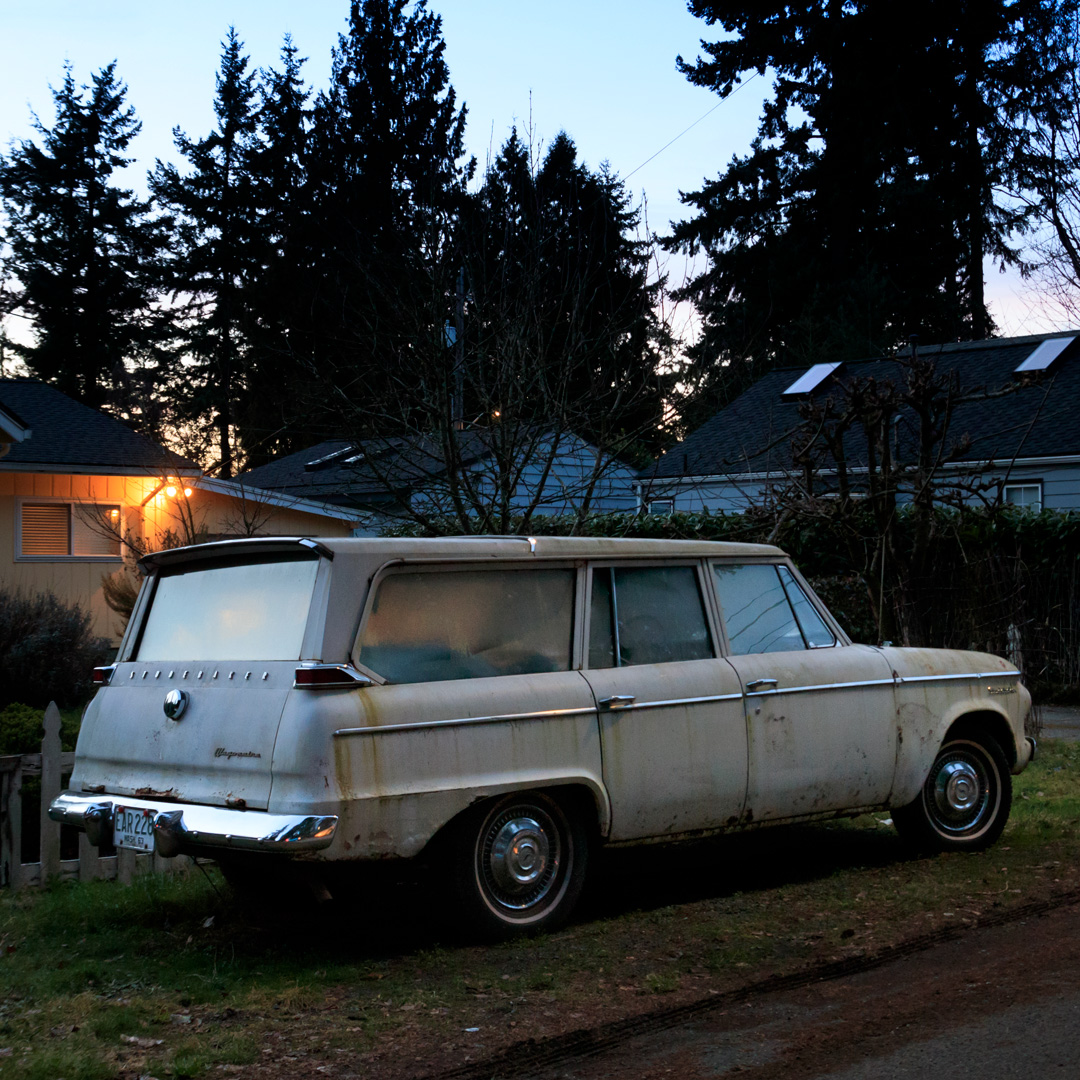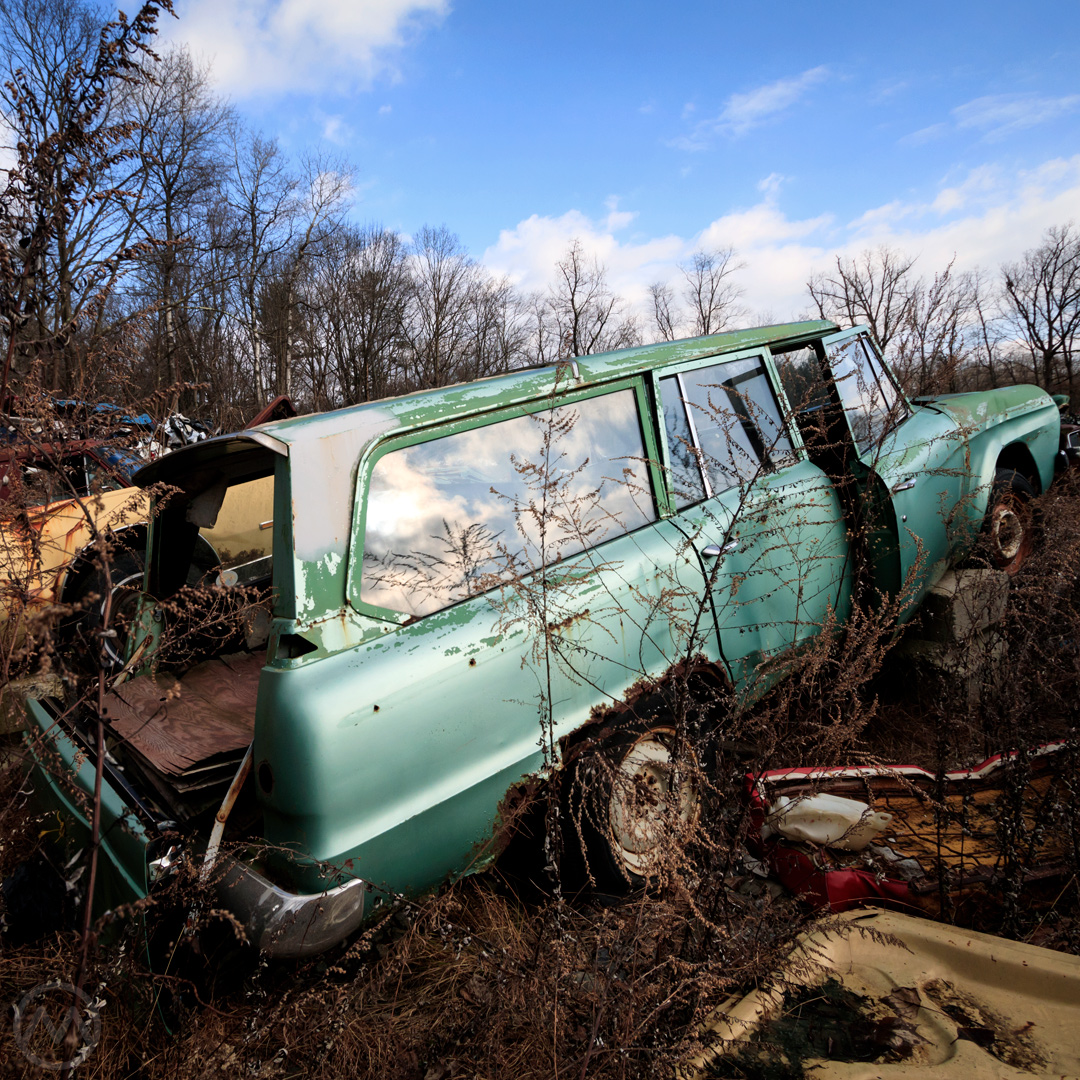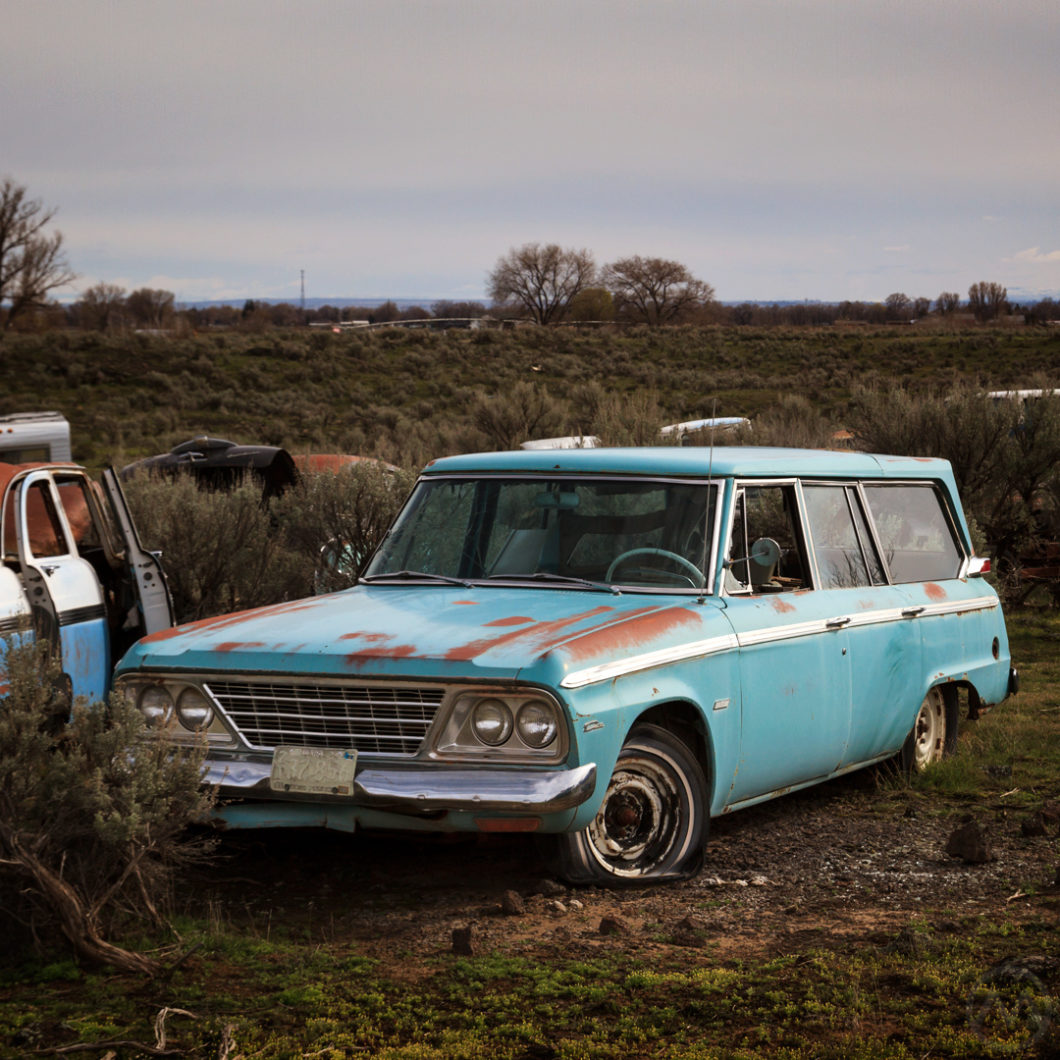Short on resources but never on pluck, Studebaker slunk into the early sixties with once again slumping sales and no easy way to turn things around. The Lark Wagonaire, a wagon with new lines and one distinct difference from other family haulers, was one of South Bend’s entirely unexpected grasps at staying relevant.
The “low hanging fruit” solutions for the sixties, as it were, had been cleverly picked in 1958 when the company sliced and diced its circa-1953 full-size designs into the compact Lark.
The Lark, designed once again on a shoestring by Studebaker’s master designer Duncan McCrae and his team, was exactly right for its moment. It was a big seller for South Bend in 1959. The attractive Hawk okay in 1958, but the 1959 Lark outsold the 1958 regular Studebakers by orders of magnitude.
These years were good, but even the income from the Lark wasn’t enough to pay for a new design after a decade of the coffers being repeatedly empty.
Though it was still superficially new enough to do well that year, In 1960 the Big 3’s compacts severely undercut the Lark, and by the end of that year Studebaker’s corporate board favored diversifying away from cars. It wasn’t hard to see why. 1959 and 1960 had been good years compared to the previous five, but the company only earned a $700,000 profit for the year. Even in 1960 that was scant funds to create new designs.
Regime Change
In 1958, Studebaker was facing financial oblivion after its failed merger with Packard. Watching what George Romney was doing with the Rambler line, Studebaker boss Harold Churchill decided to cut down the existing circa-1953 Studebaker platform into a “new” compact car. To do it, he turned to Studebaker’s master designer Duncan McCrae and his team, who were very familiar with doing more with less, having eked out annual styling changes on Studebakers and Packards for the past half-decade on almost no budget.
When the board refused to commit funds for a new design to replace the lark, McCrae resigned. After he left, Studebaker President Harold Churchill (who had overseen the creation of the Lark) did authorize exploration of new compact cars, but the board still favored diversification and ousted him.
New leadership, hired for the purpose of diversification, arrived in the form of Sherwood Egbert, an exec brought in from McCulloch Chainsaws in 1961. Egbert, however, had other ideas.
Not a car man by his resume, he nevertheless had ideas for reinvigorating the car division and liked cars. He personally drove a Mercedes 300SL. (Yes, the Gullwing one.) There were three major projects that emerged from Egbert’s unfortunately short time in control: the famous Avanti, the European-like Gran Turismo Hawk, and the one seen here, the Lark Wagonaire.
There were lower profile improvements too, like moving around the wheelbases on the Larks to make them seem more changed than they actually were and an increased focus on performance and the availability of a variety of over-the-counter speed equipment, but the cars themselves were the big idea.

The Avanti was a Loewy & Associates design, often credited to Ray Loewy but actually designed by his staffers John Ebstein, Tom Kellogg, and Bob Andrews. The others, well…
One of Egbert’s first acts was to hire industrial designer Brooks Stevens, creator of the Willys Wagon, the Jeepster, Jeep’s then-forthcoming SJ-series, and the Excalibur sports car, to spruce up the Lark.
A new design may have been out of the question, but Studebaker could make it look more modern, and that’s exactly what Stevens did. For 1962, he gave both the Lark and Hawk significant makeovers, the latter being utterly transformed from finned fifties wonder to the restrained, almost Facel-Vega-like “Gran Turismo.”
Creating the Lark Wagonaire
For 1963 the Lark got further changes from Stevens, most notably a whole new wagon body from the A-pillar back. Uniquely, the section of the roof over the rear cargo area could slide forward, creating a large open-air rear, a kind of sliding hardtop convertible but only for the rearmost section of the car.
The setup was ideal for fresh air or hauling things that wouldn’t otherwise fit in a compact wagon. (Also, for fellow car photographers, an amazing in-motion car-to-car photo platform).
Unfortunately, the Wagonaire was hobbled right out of the gate by poor roof rail seals and leaks. That led to a round of costly warranty work and even though these problems were quickly fixed, the model was never popular and often dogged by rumors of poor quality from the early cars.
For the 1964 model year Stevens again revised the lark, this time with much more updated styling all around, making a much more angular machine and more contemporary looking. For the Wagonaire, it meant that the car now looked overall a little bit like a scaled-down version of the new Kaiser-Jeep Wagoneer, also penned by Stevens, but more modern.
The Lark was quite a nice driver, and Studebaker improved it during the early sixties, offering a cheap front-disc brake option that made it one of the better stoppers of the time.
In fact, it was a great deal for customers: the brakes were basically a similar setup to those on contemporary Jaguars, but on a low-budget compact and just a $98 option. In the speed department, the company also added the R1 and R2 supercharged V8s from the Avanti as options. Theoretically, you could order yourself a very potent Wagonaire if you wanted to, though not too many people did. “Performance Wagons” were not even a niche thing in 1964.
These efforts, part of Egbert’s bigger plans, were showcased by high profile speed record attempts at Bonneville run by Andy Granatelli, the famous racing promoter and an STP employee. Granatelli and Egbert had worked together during the latter’s time at McCulloch, of which Paxton Superchargers was a division.
1964’s big style change really looked new and coincided with a decision to de-emphasize the Lark name, but it came too late.
Egbert’s health declined and in mid-1963 he was diagnosed with stomach cancer. His ill health was no doubt exacerbated by disagreements with Studebaker’s board, and he wasn’t able to keep managing the company, so his product ideas withered. He was eventually eased out by the board in November of 1963, by which time the year’s losses were clear, the car division lost over $25M for the year.

So it was that just a year after the Wagonaire had been introduced, Studebaker had to deliver the worst news of all, that its ancient factory in South Bend would close, leaving production to continue on at the company’s satellite facility in Ontario for another two years. This despite the fact that the Lark was still quite a decent car by the standards of 1964.
The Wagonaire never did really help Lark sales despite its innovative and cool setup. 40 years later General Motors revived the concept on the GMC Envoy XUV, though it too was never a big seller. Studebaker stopped making cars altogether in 1966. Those diversification efforts paid off for the board though, the corporation survived until 1979 selling many other products.
We saw the blue-green Wagonaire at the top of our post in 2015, and the white one in 2016.

